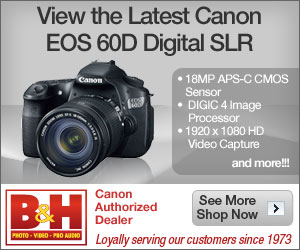Canon Rebel Macro Lens - How To Decide
Getting a Canon Rebel Macro lens that's good for you is a mixture of exactly what your budget is and what the lens is capable of. Exactly which macro lens should you decide upon?
 |
| Dragon Fly - Canon Rebel Macro lens shot |
Canon Rebel DSLR cameras can be bought in a number of versions. The newest is the Rebel T2i, and the oldest that may continue to be ordered new is the Canon Rebel XSi. There is a reasonable amount of difference amongst the models, but the thing common to each of them is that they are the entry-level digital SLR cameras in the Canon line.
That is necessary to understand when choosing a Canon Rebel Macro lens that is right for you.
The truth is, there are numerous macro lenses that can fit the camera, regardless of whether you have the latest or the most seasoned Rebel. In fact, ALL macro lenses constructed for Canon will fit.
Couldn't be any simpler. Just select one. But hold it. Is it possible that there is a BEST Canon Rebel Macro?
Is Price A Factor?
Now I'm considering that if you possess an entry-level digital SLR, you could possibly prefer to go lightly on the purse.
Assuming you spent about $700 for the camera, might you want to lay out an additional $600 or $900 for a lens that takes macro photos? Those price tags would certainly get you one of the Canon 100mm macro lenses. There are actually two, one of which is an "L" lens, the very best that Canon makes.
Don't forget, if you choose those types of rather expensive lenses, you will get an exceptional portrait lens too. That's due to the fact the 100mm lens is excellent for portrait work... Genuinely great.
Another consideration is a macro lens (with an identical focal length) by third party manufacturers such as Tamron or Sigma. These would probably save about $100.
If you wish to go much less expensive, you could contemplate a zoom lens that includes a macro setting. For example, the Sigma 70-300 features a macro switch on the lens that does some thing to the controls that actually rates it as a macro. Even so, you still can't get extremely close to the subject, and the quality is not nearly as good as the alternative lenses already mentioned. A good thing may be the selling price - under $175. This kind of lens does a reliable task of taking other styles of shots mainly because its key task is not as a macro.
Another option is to go for a shorter focal length. As an example, you will find lenses at 50mm and 60mm that are true close-up lenses. They run about $300.
Do Yourself a Favor and Get a Real Canon Rebel Macro Lens
Something that is really important to keep in mind is that taking shots of very small stuff does require different optics and technology. Obtaining a single focal length allows you to get improved image quality, significantly better than working with a zoom lens. Plus your distance from the subject will likely be shorter having a "real" macro lens.
Choosing the right Canon Rebel Macro lens really should not be hard. Take a few momemts to consider your priorities. What do you need the lens to do, and exactly how much have you got in your spending budget. Maybe you would be more satisfied waiting until you really can afford a more suitable lens rather than purchasing now and being dissatisfied with your choice.
For more about Canon Rebel Macro lenses, visit www.canoneoslenses.org.




